Greatest Games: Battle of the Flops
The Battle of the Flops: An Historic Game In Spite of the Name
September 27th 1963 is a day that should be marked and circled in red in baseball history. It was intended by design to be the worst game ever played, an insult to the NY Mets "worst team in history," as the now defunct Colt 45s sent a bunch of children out to play the hapless Mets. (Most of them were 17 and 18 year old teenagers, just old enough to drive the Metmobile!) The Mets defended their honor by destroying those little tykes 10 to 3. Unfortunately it was one of only 42 wins for the 1963 Mets. As luck would have it, those children, and some of those Mets, turned out to be World Series heroes within twelve years, many of whom had their major league debut on that night. Alot of great players, Hall of Famers, never played in the Fall Classic due to circumstances and sheer luck. The odds against any given rookie ending up in a World Series game are probably at least 100 to one. But this was a day of destiny. Let's just say it was "amazing!"
Here is a summary. For all the details, see the long version in the archives.
HOUSTON
Jimmy Wynn CF A rookie for the 45s that year, gawky little Jimmy was later traded to the Dodgers in 1974 and batted .271 with 108 RBIs, and 32 homers, scoring 104 runs for L.A. that year. He had 17 doubles and 18 stolen bases, making it his best all-around year. He had a .992 fielding percentage to go with that.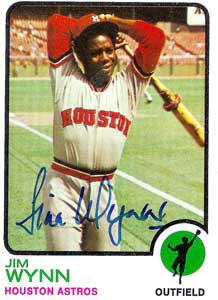 The Dodgers won the NL West Pennant that year with 102 wins and 60 losses under Walter Alston. He came to bat 16 times in the World Series and hit one double and one home run. He ended his career with an impressive 291 homers lifetime, earning the nickname, "The Toy Cannon."
The Dodgers won the NL West Pennant that year with 102 wins and 60 losses under Walter Alston. He came to bat 16 times in the World Series and hit one double and one home run. He ended his career with an impressive 291 homers lifetime, earning the nickname, "The Toy Cannon."
Aaron Pointer RF: He came back to the majors to play for Houston in 1966 and batted .346 with a .500 slugging percentage. Not bad.
Rusty Staub was the name of the skinny, clown-haired 19 year old rookie first baseman for the 45s. When he was traded to the Montreal Expos in 1969, he exploded with 29 homers and a .302 average, knocking in 30 homers the following year. In 1971 he batted .311 with 97 RBIs, but that was not to be his best year. He was traded to a team called the Metse and in the 1973 league championship he hit all three Mets home runs, including two early in game three to help Koosman win and 5 RBIs in a five game series versus the Reds with 3 base on balls.
 In the seven game match up versus the Oakland A’s he batted .423 with a .615 slugging percentage with one home run and two doubles and six RBIs. In the fourth game of that series, he had a perfect night, with a three run homer and three singles for a total of five of the Mets six ribbies. The A’s won. In 1975, still playing for the Mets, Staub had a career high of 105 RBIs., thanks to 19 homers and 30 doubles.
In the seven game match up versus the Oakland A’s he batted .423 with a .615 slugging percentage with one home run and two doubles and six RBIs. In the fourth game of that series, he had a perfect night, with a three run homer and three singles for a total of five of the Mets six ribbies. The A’s won. In 1975, still playing for the Mets, Staub had a career high of 105 RBIs., thanks to 19 homers and 30 doubles.
In 1976 he was traded to Detroit, and batted .299, and in 1977 had 34 doubles, 3 triples, 22 homers, 101 RBIs for the Tigers. In 1980 he went back to Texas and batted .300 for the Rangers. He rejoined the Mets again in 1981 and batted a career high .317. In 1983 he led the league with 24 pinch hits, and led the league again the following year with 18 pinch hits. He retired after 1985 season, with a lifetime total of 292 home runs, one more than former Houston teammate, Jimmy Wynn.
Joe Morgan, who had just had his twentieth birthday on the 19th of that month, had played his first game in the majors on the 21st, a nice birthday present. Now on the 27th of the same memorable month, he started at 2nd Base. He hit a triple! A skinny, undersized local boy, he had a lot to learn about baseball, but was brimming with talent and heart. Today, he is remembered as possibly the greatest second baseman ever to wear cleats. He came to the plate 8 times that year, batting .240 with no home runs, and one triple (which he hit that night facing the Mets, his first extra base hit in the bigs), one stolen base.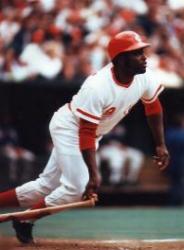 In 1971, still with Houston, he led the league with 11 of those triples, but he still was an average hitter after nine years in the bigs. In his first year with the Reds, Joe Morgan scored a league leading 122 runs, with a league leading 115 walks, with a so-far career high .292 average and 16 home runs. The next year Joe hit 26 homers and 35 doubles. The following year, in 1974 Joe hit his so-far high average of .293, and had 31 doubles. In 1975 he batted an amazing .327 and led the league in walks again, with 132. That year he was 4th in batting average, 2nd in stolen bases. The following year, 1976, he led the league in slugging percentage, with .576, batting .320 that year with 27 homers. That year he was 5th in NL batting, 5th in home runs, 2nd in RBIs, 3rd in home run percentage, 2nd in walks, stolen bases, and runs scored. He was also tied for 5th in total bases. He batted .333 in the World Series that October, with a .733 slugging percentage and his first World Series homer. It was probably the best year any second baseman ever had. In 1983 he helped get the Phils to the World Series and hit two homers in that match-up.
In 1971, still with Houston, he led the league with 11 of those triples, but he still was an average hitter after nine years in the bigs. In his first year with the Reds, Joe Morgan scored a league leading 122 runs, with a league leading 115 walks, with a so-far career high .292 average and 16 home runs. The next year Joe hit 26 homers and 35 doubles. The following year, in 1974 Joe hit his so-far high average of .293, and had 31 doubles. In 1975 he batted an amazing .327 and led the league in walks again, with 132. That year he was 4th in batting average, 2nd in stolen bases. The following year, 1976, he led the league in slugging percentage, with .576, batting .320 that year with 27 homers. That year he was 5th in NL batting, 5th in home runs, 2nd in RBIs, 3rd in home run percentage, 2nd in walks, stolen bases, and runs scored. He was also tied for 5th in total bases. He batted .333 in the World Series that October, with a .733 slugging percentage and his first World Series homer. It was probably the best year any second baseman ever had. In 1983 he helped get the Phils to the World Series and hit two homers in that match-up.
He played in a total of seven league championships, and four World Series, (‘72, 75, 76, 83) His lifetime World Series mark of 7 stolen bases is 9th on the all-time list. His lifetime mark of 689 season stolen bases is 7th in history. His mark of 1865 walks is 3rd in history. Few players can match his 22 year record at any position, 2650 games. As a second baseman he is 2nd in games played, 4th in putouts, 3rd in assists, 3rd in chances, and 4th in double plays (1505).
Jerry Grote Catcher He played in the 1969 playoff series in which the Mets beat the Atlanta Braves 3 games to 0. Then he hit two doubles in the 1969 World Series versus the Orioles. The Mets won the 2nd game on two out singles in the ninth by Charles, Grote, and Weis. The Mets won game four on a tenth inning double by Grote, who scored on an error.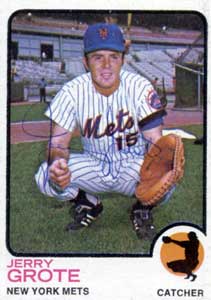 In 1975 he put together a .295 batting average with 14 doubles and 5 triples for the Mets. In 1981 he played 22 games for the Kansas City Royals, and hit .304. What is interesting about Grote is that he played in four league championships, won four NL championship rings, and played in four World Series. Few players alive today have been in four World Series, not counting Yankees. In the 1973 World Series, he had 8 hits versus the A’s, playing alongside former Houston rookie teammate, Rusty Staub. He then played in two World Series for the Dodgers, in 1977 and 1978, playing a minor role in their back to back losses to the Yankees.
In 1975 he put together a .295 batting average with 14 doubles and 5 triples for the Mets. In 1981 he played 22 games for the Kansas City Royals, and hit .304. What is interesting about Grote is that he played in four league championships, won four NL championship rings, and played in four World Series. Few players alive today have been in four World Series, not counting Yankees. In the 1973 World Series, he had 8 hits versus the A’s, playing alongside former Houston rookie teammate, Rusty Staub. He then played in two World Series for the Dodgers, in 1977 and 1978, playing a minor role in their back to back losses to the Yankees.
Bob Aspromote 3rd Base: The following year, he batted .280 with 12 home runs, 20 doubles, and 60 RBIs. He topped that in 1967, with a zingy .294 at the plate, with a solid .401 slugging average.
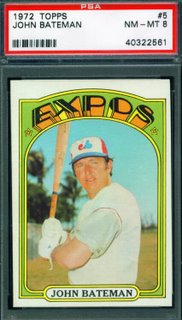 John Bateman Catcher. Bateman in 1966 he hit a respectable 17 homers for Houston, and then 15 for the Expos in 1970. That was in the pitching-heavy 60s!
John Bateman Catcher. Bateman in 1966 he hit a respectable 17 homers for Houston, and then 15 for the Expos in 1970. That was in the pitching-heavy 60s!
Joe Hoerner Hoerner pitched 3 scoreless innings in his debut game for Houston that night, giving up two hits. It was his only appearance that year. He was part of the great 1968 St. Louis pitching staff, the best in modern history, and sported a 1.48 ERA and an 8-2 record out of the bullpen that year. In the World Series against the Tigers he pitched 4.7 innings and actually got a hit, striking out three but giving up three runs.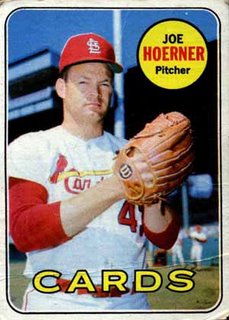 He also appeared with the Cards in their classic World Series battle against the Boston Red Sox the year before, in 1967, a year in which he had an ERA of 2.59 with 50 strikeouts. His best year however, might have been 1966, also with the Cards. He went 5-1 in 76 innings, with 63 strikeouts against only 21 walks and a 1.54 ERA on the year.
He also appeared with the Cards in their classic World Series battle against the Boston Red Sox the year before, in 1967, a year in which he had an ERA of 2.59 with 50 strikeouts. His best year however, might have been 1966, also with the Cards. He went 5-1 in 76 innings, with 63 strikeouts against only 21 walks and a 1.54 ERA on the year.
In 1969 at the age of 32, he had a 2.87 ERA, then in 1970 lowered it to 2.65 then the following year (1971) to 1.97, with 57 strikeouts against 21 walks. He pitched 14 years overall with a 39-34 win loss record with 412 strikeouts versus 181 walks with an impressive lifetime 2.99 ERA. In short he was one of the best middle relievers of his era if not all time. Not exactly a flop.
The New York Mets
The “flop” New York Mets of 1963 had their share of future stars as well. It just took a little time in the sunlight to help them blossom into mature ballplayers.
Ron Hunt 2nd Base His biggest season was when he batted .309 for the fourth place Montreal Expos in 1973 with 10 stolen bases.
Charlie Neal had been in two World Series before joining the Mets. 1963 was his last year.
Duke Snyder: He hit 14 homers that year, but batted only .243. He was in many World Series games before becoming a Met.
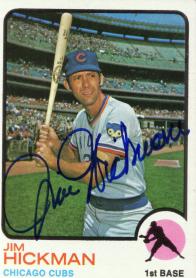 Jim Hickman OF: In 1970 he batted .315 with 32 homers and 33 doubles for the Chicago Cubs under Leo Durocher, who finished second place behind the Pirates. Hickman went on to hit 159 career homers lifetime, with 560 RBIs and 25 triples, and retired after the 1974 season.
Jim Hickman OF: In 1970 he batted .315 with 32 homers and 33 doubles for the Chicago Cubs under Leo Durocher, who finished second place behind the Pirates. Hickman went on to hit 159 career homers lifetime, with 560 RBIs and 25 triples, and retired after the 1974 season.
Ed Kranepool Kranepool went on to hit a home run in the legendary 1969 World Series and played in the Mets 1973 World Series as well. His peak seasons were 1974 through 1976. In 1974 he batted .300 with a league leading 17 pinch hits. In 1975 he batted .323.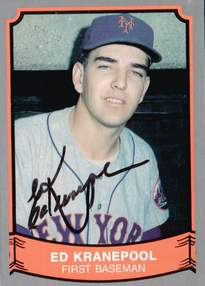 In 1976 he had 49 RBIs and batted .292 and 10 homers. Ed Kranepool became the living symbol of the Mets, raising his season average from .167 to .323 in his first 13 years. He played for 18 years with the Mets, and never worked for another team. He batted .286 in league championship play and hit 118 homers lifetime. He played in several All Star games as a Met.
In 1976 he had 49 RBIs and batted .292 and 10 homers. Ed Kranepool became the living symbol of the Mets, raising his season average from .167 to .323 in his first 13 years. He played for 18 years with the Mets, and never worked for another team. He batted .286 in league championship play and hit 118 homers lifetime. He played in several All Star games as a Met.
Pitching
Roger Craig He was traded the following year to St. Louis where he had a low 3.25 ERA with 84 strikeouts and two relief wins batting .208 at the plate. He helped them win the pennant, and pitched in scoreless relief in five World Series innings versus the Yankees. He even won game four with 4.2 innings of scoreless relief in a 4-3 game against the Yankees, giving up two hits, and tying the series 2 wins apiece, helping the Cards to win the series in seven against the homer slugging Yanks.
He even won game four with 4.2 innings of scoreless relief in a 4-3 game against the Yankees, giving up two hits, and tying the series 2 wins apiece, helping the Cards to win the series in seven against the homer slugging Yanks.
Craig had a respectable 803 strikeouts lifetime, with 7 career shutouts.
Al Jackson Pitcher He was traded to St. Louis in 1966, and had his best year, with a sparkling 2.51 ERA and 11 complete games and a total of 90 strike outs and 3 shutouts. In 1967, he went 9 and 4 but did not play in the World Series against the Red Sox.
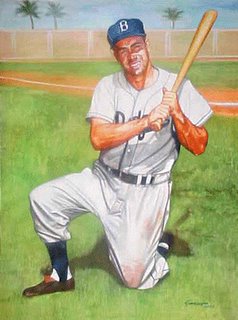
Duke Snyder was probably the oldest player in "The Battle of the Flops," but he too had been a World Series hero.
September 27th 1963 is a day that should be marked and circled in red in baseball history. It was intended by design to be the worst game ever played, an insult to the NY Mets "worst team in history," as the now defunct Colt 45s sent a bunch of children out to play the hapless Mets. (Most of them were 17 and 18 year old teenagers, just old enough to drive the Metmobile!) The Mets defended their honor by destroying those little tykes 10 to 3. Unfortunately it was one of only 42 wins for the 1963 Mets. As luck would have it, those children, and some of those Mets, turned out to be World Series heroes within twelve years, many of whom had their major league debut on that night. Alot of great players, Hall of Famers, never played in the Fall Classic due to circumstances and sheer luck. The odds against any given rookie ending up in a World Series game are probably at least 100 to one. But this was a day of destiny. Let's just say it was "amazing!"
Here is a summary. For all the details, see the long version in the archives.
HOUSTON
Jimmy Wynn CF A rookie for the 45s that year, gawky little Jimmy was later traded to the Dodgers in 1974 and batted .271 with 108 RBIs, and 32 homers, scoring 104 runs for L.A. that year. He had 17 doubles and 18 stolen bases, making it his best all-around year. He had a .992 fielding percentage to go with that.
 The Dodgers won the NL West Pennant that year with 102 wins and 60 losses under Walter Alston. He came to bat 16 times in the World Series and hit one double and one home run. He ended his career with an impressive 291 homers lifetime, earning the nickname, "The Toy Cannon."
The Dodgers won the NL West Pennant that year with 102 wins and 60 losses under Walter Alston. He came to bat 16 times in the World Series and hit one double and one home run. He ended his career with an impressive 291 homers lifetime, earning the nickname, "The Toy Cannon."Aaron Pointer RF: He came back to the majors to play for Houston in 1966 and batted .346 with a .500 slugging percentage. Not bad.
Rusty Staub was the name of the skinny, clown-haired 19 year old rookie first baseman for the 45s. When he was traded to the Montreal Expos in 1969, he exploded with 29 homers and a .302 average, knocking in 30 homers the following year. In 1971 he batted .311 with 97 RBIs, but that was not to be his best year. He was traded to a team called the Metse and in the 1973 league championship he hit all three Mets home runs, including two early in game three to help Koosman win and 5 RBIs in a five game series versus the Reds with 3 base on balls.
 In the seven game match up versus the Oakland A’s he batted .423 with a .615 slugging percentage with one home run and two doubles and six RBIs. In the fourth game of that series, he had a perfect night, with a three run homer and three singles for a total of five of the Mets six ribbies. The A’s won. In 1975, still playing for the Mets, Staub had a career high of 105 RBIs., thanks to 19 homers and 30 doubles.
In the seven game match up versus the Oakland A’s he batted .423 with a .615 slugging percentage with one home run and two doubles and six RBIs. In the fourth game of that series, he had a perfect night, with a three run homer and three singles for a total of five of the Mets six ribbies. The A’s won. In 1975, still playing for the Mets, Staub had a career high of 105 RBIs., thanks to 19 homers and 30 doubles.In 1976 he was traded to Detroit, and batted .299, and in 1977 had 34 doubles, 3 triples, 22 homers, 101 RBIs for the Tigers. In 1980 he went back to Texas and batted .300 for the Rangers. He rejoined the Mets again in 1981 and batted a career high .317. In 1983 he led the league with 24 pinch hits, and led the league again the following year with 18 pinch hits. He retired after 1985 season, with a lifetime total of 292 home runs, one more than former Houston teammate, Jimmy Wynn.
Joe Morgan, who had just had his twentieth birthday on the 19th of that month, had played his first game in the majors on the 21st, a nice birthday present. Now on the 27th of the same memorable month, he started at 2nd Base. He hit a triple! A skinny, undersized local boy, he had a lot to learn about baseball, but was brimming with talent and heart. Today, he is remembered as possibly the greatest second baseman ever to wear cleats. He came to the plate 8 times that year, batting .240 with no home runs, and one triple (which he hit that night facing the Mets, his first extra base hit in the bigs), one stolen base.
 In 1971, still with Houston, he led the league with 11 of those triples, but he still was an average hitter after nine years in the bigs. In his first year with the Reds, Joe Morgan scored a league leading 122 runs, with a league leading 115 walks, with a so-far career high .292 average and 16 home runs. The next year Joe hit 26 homers and 35 doubles. The following year, in 1974 Joe hit his so-far high average of .293, and had 31 doubles. In 1975 he batted an amazing .327 and led the league in walks again, with 132. That year he was 4th in batting average, 2nd in stolen bases. The following year, 1976, he led the league in slugging percentage, with .576, batting .320 that year with 27 homers. That year he was 5th in NL batting, 5th in home runs, 2nd in RBIs, 3rd in home run percentage, 2nd in walks, stolen bases, and runs scored. He was also tied for 5th in total bases. He batted .333 in the World Series that October, with a .733 slugging percentage and his first World Series homer. It was probably the best year any second baseman ever had. In 1983 he helped get the Phils to the World Series and hit two homers in that match-up.
In 1971, still with Houston, he led the league with 11 of those triples, but he still was an average hitter after nine years in the bigs. In his first year with the Reds, Joe Morgan scored a league leading 122 runs, with a league leading 115 walks, with a so-far career high .292 average and 16 home runs. The next year Joe hit 26 homers and 35 doubles. The following year, in 1974 Joe hit his so-far high average of .293, and had 31 doubles. In 1975 he batted an amazing .327 and led the league in walks again, with 132. That year he was 4th in batting average, 2nd in stolen bases. The following year, 1976, he led the league in slugging percentage, with .576, batting .320 that year with 27 homers. That year he was 5th in NL batting, 5th in home runs, 2nd in RBIs, 3rd in home run percentage, 2nd in walks, stolen bases, and runs scored. He was also tied for 5th in total bases. He batted .333 in the World Series that October, with a .733 slugging percentage and his first World Series homer. It was probably the best year any second baseman ever had. In 1983 he helped get the Phils to the World Series and hit two homers in that match-up. He played in a total of seven league championships, and four World Series, (‘72, 75, 76, 83) His lifetime World Series mark of 7 stolen bases is 9th on the all-time list. His lifetime mark of 689 season stolen bases is 7th in history. His mark of 1865 walks is 3rd in history. Few players can match his 22 year record at any position, 2650 games. As a second baseman he is 2nd in games played, 4th in putouts, 3rd in assists, 3rd in chances, and 4th in double plays (1505).
Jerry Grote Catcher He played in the 1969 playoff series in which the Mets beat the Atlanta Braves 3 games to 0. Then he hit two doubles in the 1969 World Series versus the Orioles. The Mets won the 2nd game on two out singles in the ninth by Charles, Grote, and Weis. The Mets won game four on a tenth inning double by Grote, who scored on an error.
 In 1975 he put together a .295 batting average with 14 doubles and 5 triples for the Mets. In 1981 he played 22 games for the Kansas City Royals, and hit .304. What is interesting about Grote is that he played in four league championships, won four NL championship rings, and played in four World Series. Few players alive today have been in four World Series, not counting Yankees. In the 1973 World Series, he had 8 hits versus the A’s, playing alongside former Houston rookie teammate, Rusty Staub. He then played in two World Series for the Dodgers, in 1977 and 1978, playing a minor role in their back to back losses to the Yankees.
In 1975 he put together a .295 batting average with 14 doubles and 5 triples for the Mets. In 1981 he played 22 games for the Kansas City Royals, and hit .304. What is interesting about Grote is that he played in four league championships, won four NL championship rings, and played in four World Series. Few players alive today have been in four World Series, not counting Yankees. In the 1973 World Series, he had 8 hits versus the A’s, playing alongside former Houston rookie teammate, Rusty Staub. He then played in two World Series for the Dodgers, in 1977 and 1978, playing a minor role in their back to back losses to the Yankees.Bob Aspromote 3rd Base: The following year, he batted .280 with 12 home runs, 20 doubles, and 60 RBIs. He topped that in 1967, with a zingy .294 at the plate, with a solid .401 slugging average.
 John Bateman Catcher. Bateman in 1966 he hit a respectable 17 homers for Houston, and then 15 for the Expos in 1970. That was in the pitching-heavy 60s!
John Bateman Catcher. Bateman in 1966 he hit a respectable 17 homers for Houston, and then 15 for the Expos in 1970. That was in the pitching-heavy 60s! Joe Hoerner Hoerner pitched 3 scoreless innings in his debut game for Houston that night, giving up two hits. It was his only appearance that year. He was part of the great 1968 St. Louis pitching staff, the best in modern history, and sported a 1.48 ERA and an 8-2 record out of the bullpen that year. In the World Series against the Tigers he pitched 4.7 innings and actually got a hit, striking out three but giving up three runs.
 He also appeared with the Cards in their classic World Series battle against the Boston Red Sox the year before, in 1967, a year in which he had an ERA of 2.59 with 50 strikeouts. His best year however, might have been 1966, also with the Cards. He went 5-1 in 76 innings, with 63 strikeouts against only 21 walks and a 1.54 ERA on the year.
He also appeared with the Cards in their classic World Series battle against the Boston Red Sox the year before, in 1967, a year in which he had an ERA of 2.59 with 50 strikeouts. His best year however, might have been 1966, also with the Cards. He went 5-1 in 76 innings, with 63 strikeouts against only 21 walks and a 1.54 ERA on the year. In 1969 at the age of 32, he had a 2.87 ERA, then in 1970 lowered it to 2.65 then the following year (1971) to 1.97, with 57 strikeouts against 21 walks. He pitched 14 years overall with a 39-34 win loss record with 412 strikeouts versus 181 walks with an impressive lifetime 2.99 ERA. In short he was one of the best middle relievers of his era if not all time. Not exactly a flop.
The New York Mets
The “flop” New York Mets of 1963 had their share of future stars as well. It just took a little time in the sunlight to help them blossom into mature ballplayers.
Ron Hunt 2nd Base His biggest season was when he batted .309 for the fourth place Montreal Expos in 1973 with 10 stolen bases.
Charlie Neal had been in two World Series before joining the Mets. 1963 was his last year.
Duke Snyder: He hit 14 homers that year, but batted only .243. He was in many World Series games before becoming a Met.
 Jim Hickman OF: In 1970 he batted .315 with 32 homers and 33 doubles for the Chicago Cubs under Leo Durocher, who finished second place behind the Pirates. Hickman went on to hit 159 career homers lifetime, with 560 RBIs and 25 triples, and retired after the 1974 season.
Jim Hickman OF: In 1970 he batted .315 with 32 homers and 33 doubles for the Chicago Cubs under Leo Durocher, who finished second place behind the Pirates. Hickman went on to hit 159 career homers lifetime, with 560 RBIs and 25 triples, and retired after the 1974 season.Ed Kranepool Kranepool went on to hit a home run in the legendary 1969 World Series and played in the Mets 1973 World Series as well. His peak seasons were 1974 through 1976. In 1974 he batted .300 with a league leading 17 pinch hits. In 1975 he batted .323.
 In 1976 he had 49 RBIs and batted .292 and 10 homers. Ed Kranepool became the living symbol of the Mets, raising his season average from .167 to .323 in his first 13 years. He played for 18 years with the Mets, and never worked for another team. He batted .286 in league championship play and hit 118 homers lifetime. He played in several All Star games as a Met.
In 1976 he had 49 RBIs and batted .292 and 10 homers. Ed Kranepool became the living symbol of the Mets, raising his season average from .167 to .323 in his first 13 years. He played for 18 years with the Mets, and never worked for another team. He batted .286 in league championship play and hit 118 homers lifetime. He played in several All Star games as a Met. Pitching
Roger Craig He was traded the following year to St. Louis where he had a low 3.25 ERA with 84 strikeouts and two relief wins batting .208 at the plate. He helped them win the pennant, and pitched in scoreless relief in five World Series innings versus the Yankees.
 He even won game four with 4.2 innings of scoreless relief in a 4-3 game against the Yankees, giving up two hits, and tying the series 2 wins apiece, helping the Cards to win the series in seven against the homer slugging Yanks.
He even won game four with 4.2 innings of scoreless relief in a 4-3 game against the Yankees, giving up two hits, and tying the series 2 wins apiece, helping the Cards to win the series in seven against the homer slugging Yanks.Craig had a respectable 803 strikeouts lifetime, with 7 career shutouts.
Al Jackson Pitcher He was traded to St. Louis in 1966, and had his best year, with a sparkling 2.51 ERA and 11 complete games and a total of 90 strike outs and 3 shutouts. In 1967, he went 9 and 4 but did not play in the World Series against the Red Sox.

Duke Snyder was probably the oldest player in "The Battle of the Flops," but he too had been a World Series hero.

0 Comments:
Post a Comment
<< Home